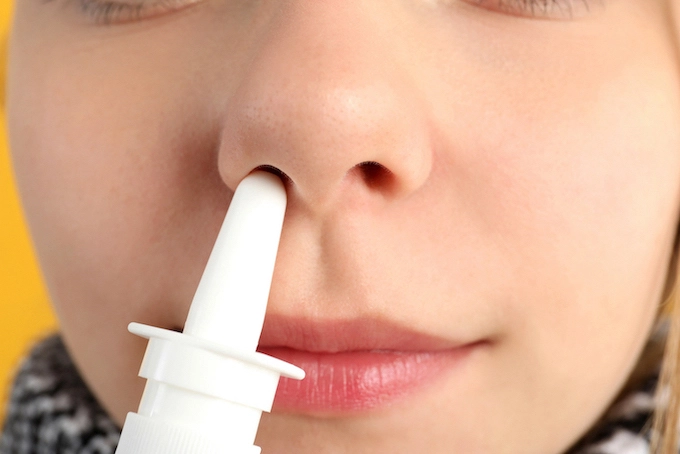Introduction:
As an expert in Ear, Nose, and Throat (ENT) surgery in Houston, Texas I find it crucial to shed light on the significance of having an open nasal airway when using a CPAP (Continuous Positive Airway Pressure) machine. CPAP therapy is currently considered first line therapy for sleep apnea. CPAP has a very high failure rate, but it’s easy to use and relatively cheap, so it is the first mode of treatment that is usually tried. If it has such a high failure rate,I why would it continue to be thought of as first line therapy? To answer this you have to understand how it works. As you all know from watching my videos on Instagram or youtube, sleep apnea is a progressive weakening of the structures of the back of the throat, usually combined with a nasal obstruction. Sleep apnea is often diagnosed with a sleep study. Depending on who is evaluating you, the physician may or may not evaluate your nose to see if it is open adequately. If you have sleep apnea it is very important that you make sure you have your nose evaluated before trying to use a CPAP machine. The CPAP machine works by pushing a column of air through the nose and splinting the palate and tongue open. If the nose is not open, the CPAP will not work well. This will make you feel as though you are suffocating instead of making you feel good. CPAP is widely recognized as an effective treatment for obstructive sleep apnea (OSA), a condition characterized by repetitive pauses in breathing during sleep. In this blog post, I will explain, in simple terms, the necessity of an open nasal airway for successful CPAP therapy and discuss various options available to help improve nasal breathing.Understanding the Importance of Nasal Breathing and CPAP Therapy:
Proper nasal breathing plays a pivotal role in maintaining the health and function of the respiratory system. When we breathe through our noses, the air is filtered, moisturized, and warmed before entering the lungs. However, individuals with sleep apnea often struggle with nasal congestion or obstruction, hindering their ability to breathe effectively and comfortably. This is where CPAP therapy comes into the picture. A recent study by Iwata et al followed 43 patients with moderate to severe sleep apnea through their failure of CPAP therapy. All 43 had a demonstrable nasal obstruction on CT scan. After a surgeon fixed the nasal obstruction, 40 of the participants were able to tolerate CPAP successfully. The other 3 no longer had sleep apnea. You see, CPAP machines deliver a constant flow of pressurized air through a mask worn over the nose or nose. This positive pressure keeps the airway open during sleep, preventing episodes of breathing cessation and enabling a more normal sleep pattern. However, to achieve optimal CPAP efficacy, it is imperative to ensure the nasal airway is open and unobstructed.
Options to Open the Nasal Airway:
- Septal Surgery: If the septum is deviated on CT scan it usually causes significant nasal obstruction. This is usually corrected by a simple procedure done under IV sedation without any discomfort. The recovery is usually fairly comfortable at Texas Sinus and Snoring, ranging from 0-5 days out of work depending your pain tolerance and use of pain meds.
- Nasal Decongestants: Over-the-counter nasal decongestant sprays or drops containing ingredients like oxymetazoline or pseudoephedrine can provide temporary relief from nasal congestion. These medications reduce swelling and open up the nasal passages. However, they should only be used for a short duration of time (3-5 days) to avoid rebound congestion and dependency.
- Saline Nasal Irrigation: Saline nasal irrigation involves flushing out the nasal cavity with a saltwater solution using a neti pot or a squeeze bottle. This method helps remove allergens, mucus, and irritants, promoting nasal hygiene and improving nasal airflow. Saline rinses are safe, easy to use, and can be done daily or as needed.
- Nasal Dilators: Nasal dilators are small devices that help widen the nostrils and improve nasal breathing. External nasal dilators, such as nasal strips or nasal clips, are applied externally over the bridge of the nose and help expand the nasal passages. Internal nasal dilators, like nasal cones or nasal stents, are inserted into the nostrils to mechanically open the airway.
- Allergy Management: For individuals with allergies, managing allergic symptoms is crucial for maintaining an open nasal airway. This may involve identifying and avoiding allergens, using antihistamines, seeking specific allergy treatment such as immunotherapy, which can desensitize the immune system to allergens.
- Nasal Valve Surgery: In cases where nasal obstruction is due to the sidewalls being too floppy to remain open, surgical intervention may be considered. Nasal valve surgery aims to correct or reconstruct the nasal passages, restoring proper airflow. The decision for surgery should only be made after a thorough evaluation and discussion with an ENT specialist who is an expert in nasal surgery.
- CPAP Humidification: Another important aspect of CPAP therapy is humidification. Dryness in the nasal passages can cause discomfort and congestion. Using a CPAP machine with an integrated heated humidifier or a standalone humidifier helps moisturize the air, reducing nasal dryness and improving comfort.In general, an open nasal airway is essential for the success of CPAP therapy, allowing for unobstructed airflow and effective treatment of obstructive sleep apnea. Options to improve nasal breathing include septal corrective surgery, nasal decongestants, saline nasal irrigation, nasal dilators, allergy management, nasal valve surgery, and CPAP humidification.It is crucial to consult with an ENT specialist to determine the underlying cause of nasal obstruction and to explore the most suitable options for optimizing nasal breathing and CPAP therapy effectiveness. Through proper management of nasal airflow, CPAP users can achieve better sleep quality, enhanced overall well-being, and long-term success in managing their sleep apnea.




